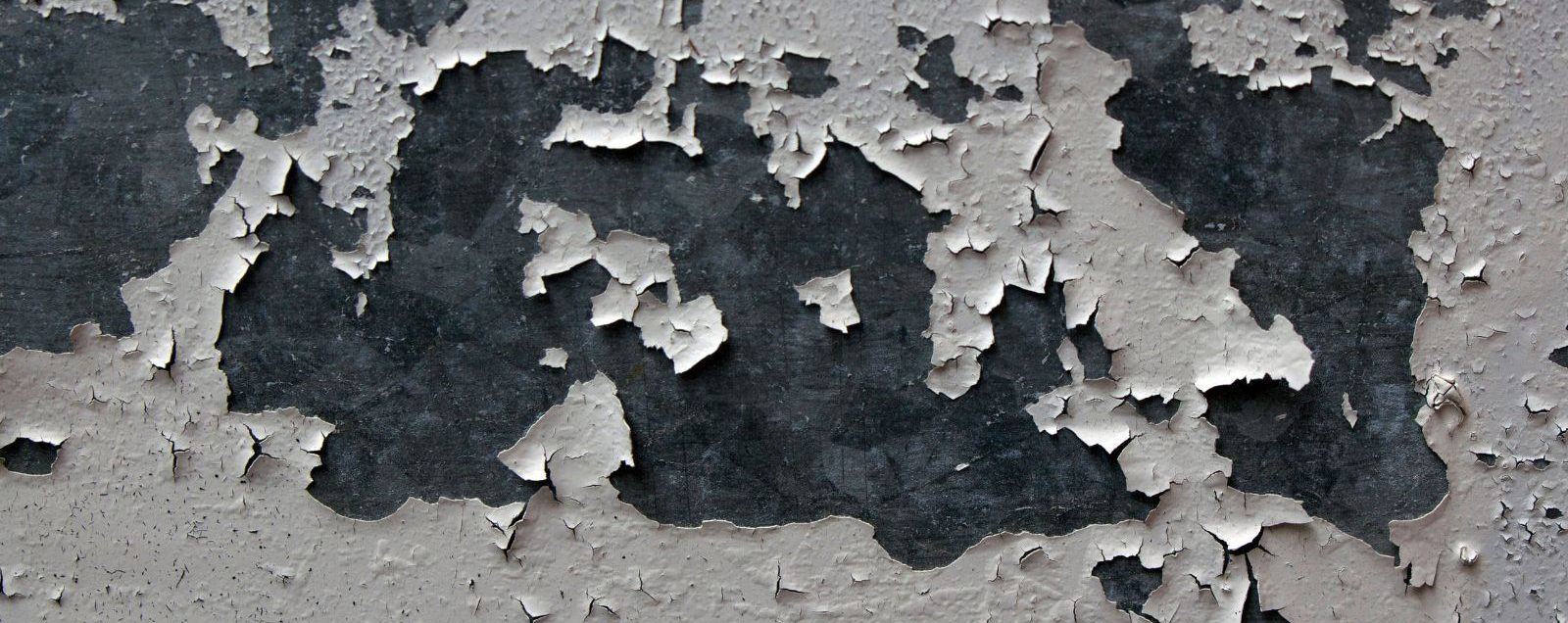
Common Exterior Paint Problems and How to Fix Them
Posted on April 26, 2021
Painted exteriors have a lifespan, its important to keep an eye out for common signs of paint failure. We have compiled 9 of the most common things to look for that are signs its time for a new coat of paint on your homes exterior:
If you notice any of the below problems on your home, contact us to set up a free painting estimate.
1. Blistering Paint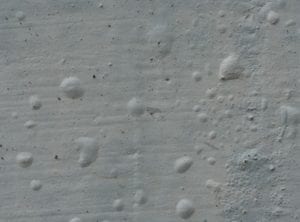
When paint blisters, bubbles start to appear under the paint, Most of the time blistering paint is caused by moisture or water problems. If you see bubbling or blistering paint on your home, inspect the area for possible areas of water intrusion and fix any leaks prior to doing repairs.
Repair: Scrape the blistered paint down to the wood. Make sure you are painting in dry times, and out of direct sunlight. Scrape away blistered paint, and sand to bare wood. Use a high quality paint.
2. Alligatoring and Checking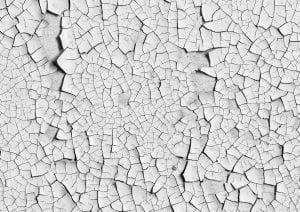
Alligatoring refers to a cracked pattern in the paint, it resembles the skin of an alligator. The cause of the cracks is usually improper application or surface prep when the paint was applied, it can also happen as paint ages over many years.
Repair: Sand the surface to remove the cracked paint, apply primer and re-paint the area.
3. Efflorescence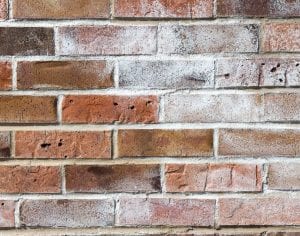
Efflorescence happens on painted masonry and brick. It shows up a salty white deposits on the paint and is caused by minerals in the brick or concrete getting pulled to the surface.
Repair: You must first identify and eliminate the source of the moisture in the wall. Use patching concrete that has latex in it to seal off gutters, downspouts, joints and other water sources. To repair the problem, remove all chalky residue and any flaking paint with a wire brush. Scrub the area with TSP cleaner. Allow ample dry time and repaint with a high-quality latex house paint.
4. Chalking
Chalking is when a chalky film develops on the surface of the paint. While some chalking is completely normal, being that’s how paint cleans itself, an overabundance of it signals a deeper problem. When chalking is too severe, it may run off and stain the surrounding ground, plants and building.
Repair: The current chalk on the paint must be removed before paints. Power wash or scrub the paint with trisodium phosphate cleaning solution and rinse clean with water. Once the area is dry, use latex house paint to repaint the area.
5. Sagging or Running
If your paint looks like it is melting off your house, you have sagging or running. This can be caused by the paint being thinned too much prior to application, or the paint being applied in too thick of coats.
Repair: If the paint has been applied and is still wet, you can use a brush to move the paint around and distribute it more evenly. If the paint is dried, use a scraper or sander and even out the paint. Using two thinner coats, apply the paint.
6. Mildew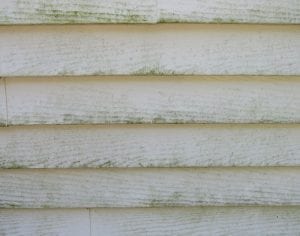
Mildew grows on paint film and caulk. It’s typically brown or green and shows as dark spots. It’s caused by poor ventilation and lack of sunlight, in addition to standing wetness.
Repair: While using eye and skin protection, scrub the area with bleach. Use the mixture 1 part bleach to 3 parts water. Let the solution sit on the cleaned area for up to 15 minutes, then rinse with clean water. Wash again with detergent solution and rinse thoroughly. Let the area dry completely, and apply high-quality latex house paint.
7. Rust Stains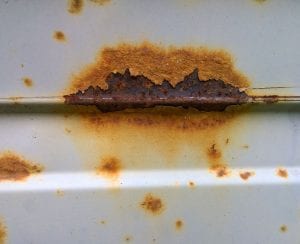
Rust stains show up as red, brown or even black stains on the paint. Typically, it’s caused by the wrong nails being used to attach siding. Excessive weather can cause steel nails to oxidize and rust.
Repair: First, replace the nails that are rusted with galvanized or stainless steel nails. If they cannot be removed, sand the heads to bare metal and countersink them. Prime with a rush-blocking primer. Then caulk, fill, or patch the heads to smooth. Use a high quality paint to finish the job.
8. Peeling Paint Due to Poor Adhesion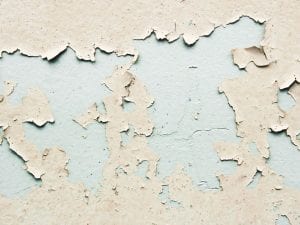
Paint that peels from the walls is more common than homeowners realize. It is usually caused by moisture in the wood, or poor adhesion. If the paint is peeling in small pieces, and leaving layers behind, you’re dealing with poor adhesion.
Repair: Scrape away the peeling paint. Sand the area to create a feathering effect on the outer areas. Use primer to spot cover the bare areas. Repaint the area with high quality paint.
9. Peeling Paint Due to Moisture
If your paint is peeling due to moisture, you will see large sections coming off with bare wood underneath. This is typically found around windows, doors and gutters.
Repair: Check for the source of the moisture. Make sure downspouts and drainage are taking water away from the home and walls. Repair and replace any damaged caulk. Then scrape away the peeling paint and sand the area. Create a feather effect around the edge of the project. Spot prime the bare wood. Finally, paint the area with quality home latex paint.





